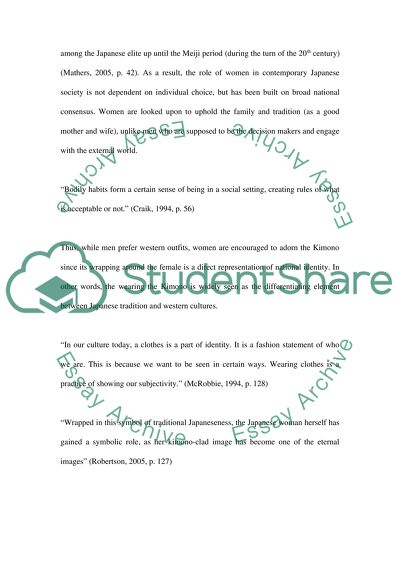How the Kimono represented Japanese tradition and national identity Outline. Retrieved from https://studentshare.org/miscellaneous/1590485-how-the-kimono-represented-japanese-tradition-and-national-identity-and-how-it-has-changed-overtime
How the Kimono Represented Japanese Tradition and National Identity Outline. https://studentshare.org/miscellaneous/1590485-how-the-kimono-represented-japanese-tradition-and-national-identity-and-how-it-has-changed-overtime.


